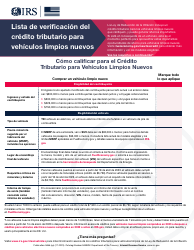Checklist for New York State Farmers and Certified Pesticide Applicators Complying With the Worker Protection Standard (Wps) - New York
Checklist for New York State Farmers and Certified Pesticide Applicators Complying With the Worker Protection Standard (Wps) is a legal document that was released by the New York State Department of Environmental Conservation - a government authority operating within New York.
FAQ
Q: What is the Worker Protection Standard (WPS)?
A: The Worker Protection Standard (WPS) is a set of federal regulations aimed at protecting agricultural workers from potential exposure to pesticides.
Q: Who does the WPS apply to in New York State?
A: The WPS applies to all agricultural employers in New York State, including farmers, growers, and pesticide applicators.
Q: What are the requirements for pesticide handlers under the WPS?
A: Pesticide handlers must be trained on the safe handling and use of pesticides, wear the required personal protective equipment (PPE), and follow specific precautions to minimize exposure.
Q: What are the requirements for agricultural workers under the WPS?
A: Agricultural workers must receive pesticide safety training, be provided with information about the pesticides being used, have access to decontamination supplies, and not enter treated areas for a specified period of time.
Q: What is required for pesticide applications in agricultural settings?
A: Pesticide applicators must follow label instructions, avoid drift to non-target areas, and take measures to protect nearby workers and bystanders.
Q: What is the Grace Period provision of the WPS?
A: The Grace Period provision allows agricultural employers in New York State to use existing pesticide safety training materials until December 31, 2020, as long as certain conditions are met.
Q: Are there additional requirements for certified pesticide applicators in New York State?
A: Yes, certified pesticide applicators in New York State must comply with the WPS as well as specific state regulations regarding pesticide use and application.
Form Details:
- The latest edition currently provided by the New York State Department of Environmental Conservation;
- Ready to use and print;
- Easy to customize;
- Compatible with most PDF-viewing applications;
- Fill out the form in our online filing application.
Download a printable version of the form by clicking the link below or browse more documents and templates provided by the New York State Department of Environmental Conservation.













